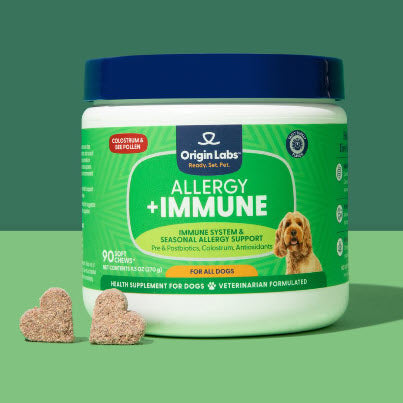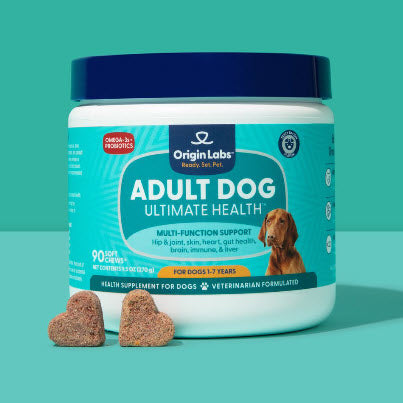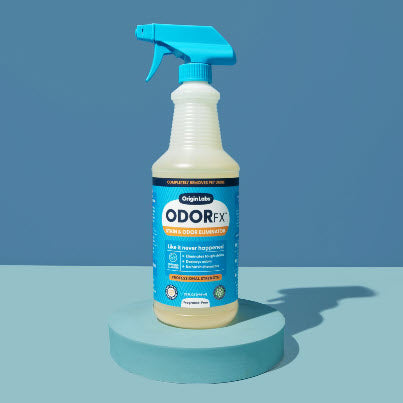Introduction
Many dog owners often wonder: Can dogs eat catfish? The curiosity stems from the desire to provide a varied diet that includes safe and nutritious options. Feeding catfish to dogs brings up essential questions about nutritional benefits and potential risks.
Understanding these factors is crucial. On one hand, catfish can offer significant nutritional advantages, such as high-quality protein and beneficial omega-3 fatty acids. On the other hand, there are concerns regarding raw fish contamination, mercury levels, and the danger posed by fish bones.
By exploring these aspects, dog owners can make informed decisions about incorporating catfish into their pets' diets. For more support tailored to your dog's age, consider products like Adult Dog Food or Puppy Health Supplements which provides support as your furry friends grow.
Understanding the Nutritional Value of Catfish for Dogs
Catfish can be a nutritious addition to your dog's diet, offering several key benefits for their health and wellbeing. Let's delve into the specific nutrients found in catfish that can support your dog's overall health.
Key Nutrients in Catfish
Omega-3 Fatty Acids
These essential fats are known for their anti-inflammatory properties. They play a vital role in supporting the inflammation response in dogs' bodies. Omega-3s can help manage conditions like arthritis and promote a healthy coat and skin. While catfish is a good source, other recommended sources include salmon, flaxseeds, and fish oil supplements.
Protein
Catfish is protein-rich, making it an excellent choice for muscle development and repair, especially for active dogs. Protein is crucial for maintaining lean body mass and supporting tissue growth and repair.
Example of Protein Content per 100g of Catfish:
- 23 grams of Protein
The Role of Omega-3 Fatty Acids
Omega-3 fatty acids are crucial not just for inflammatory responses but also for cognitive function and cardiovascular health. They can help reduce joint inflammation, which is particularly beneficial for senior dogs or those with arthritis. For senior dogs specifically, there are chews tailored to their age that provide health support, including hip & joint supplements.
Protein-Rich Nature of Catfish
The high protein content in catfish supports muscle development and repair. This is particularly beneficial for:
- Active Dogs: Engaged in activities such as agility training or long walks.
- Puppies: Needing additional protein for growth.
Providing your dog with protein-rich foods like catfish helps ensure they get the necessary amino acids required for muscle maintenance and overall vitality.
Incorporating catfish into your dog's diet can offer numerous nutritional benefits, from omega-3 fatty acids to high-quality protein—each contributing to their overall health and wellbeing.
Assessing the Potential Dangers: Raw Catfish, Mercury, and Fish Bones
Risks of Feeding Raw Catfish to Dogs
Feeding raw catfish to dogs comes with several risks. Raw fish can harbor various harmful bacteria and parasites that may pose serious health threats. One significant concern is bacterial contamination, which can include pathogens like Salmonella and Listeria. These bacteria not only endanger dogs but can also spread to humans through handling contaminated food.
Another critical issue is the presence of parasites such as tapeworms (Diphyllobothrium latum). Tapeworms in raw fish can infect dogs if ingested, leading to digestive problems and nutritional deficiencies. Symptoms of tapeworm infection in dogs may include weight loss, diarrhea, and vomiting.
Mercury Levels in Catfish
Catfish, like many other fish, can accumulate mercury in their tissues over time. This heavy metal poses a threat to dogs' health if consumed in large quantities. Mercury exposure can lead to:
- Neurological issues: Tremors, lack of coordination, and behavioral changes.
- Kidney damage: Increased risk of renal failure.
- Gastrointestinal problems: Vomiting and diarrhea.
To mitigate these risks:
- Limit consumption: Feed catfish occasionally rather than making it a staple of the diet.
- Choose smaller fish: Smaller catfish tend to have lower mercury levels compared to larger ones.
Danger of Fish Bones
Fish bones present a choking hazard and can cause severe internal injuries or blockages when ingested by dogs. The sharp edges of fish bones may puncture or lodge in the throat, stomach, or intestines, leading to:
- Choking incidents: Obstructing the airway and causing difficulty breathing.
- Internal lacerations: Resulting in bleeding or infection.
- Blockages: Hindering the passage of food through the digestive system.
To prevent these dangers:
- Debone thoroughly: Ensure all bones are removed before feeding catfish to your dog.
- Monitor eating habits: Supervise your dog while they eat to catch any potential problems early.
Understanding these potential dangers equips dog owners with the knowledge needed to make informed decisions about including catfish in their pets' diets. By taking appropriate precautions, you can minimize risks and provide safe nutritional benefits from this source.
Safe Preparation Methods for Feeding Catfish to Dogs
When cooking catfish for dogs, it's crucial to focus on eliminating harmful bacteria while preserving the fish's nutritional benefits. Here are some effective techniques to achieve this:
Cooking Techniques
- Boiling: Place the catfish in a pot of boiling water. Cook for approximately 10-15 minutes or until the fish is fully cooked through. Boiling ensures that any harmful bacteria or parasites are killed.
- Baking: Preheat your oven to 350°F (175°C). Place the catfish on a baking sheet and bake for about 20-25 minutes. Baking helps retain essential nutrients while ensuring thorough cooking.
- Grilling: Preheat your grill to medium heat. Grill the catfish for around 4-6 minutes per side, depending on the thickness of the fillet. This method adds a smoky flavor without compromising nutritional value.
Deboning and Skin Removal
Fish bones can pose severe choking hazards and internal injuries to dogs. Proper preparation involves:
Deboning:
- Use a pair of tweezers or a fish bone remover tool to carefully remove all tiny bones.
- Running your fingers along the fillet can help locate any missed bones.
Removing the Skin:
- Lay the fillet skin-side down on a cutting board.
- Starting from one end, slide a sharp knife between the flesh and skin, angling it slightly downwards.
- Hold onto the skin firmly with one hand and gently saw back and forth with the knife until completely separated.
Tips for Retaining Nutritional Integrity
- Avoid excessive seasoning. Stick to dog-safe herbs like parsley or basil if you wish to enhance flavor without risking their health.
- Do not use butter or oils as they add unnecessary fats, which can lead to digestive issues.
- Ensure all cooking utensils and surfaces are clean to prevent cross-contamination.
Cooking catfish for dogs properly ensures they benefit from its rich nutrients without exposure to health risks. By following these guidelines, you can prepare a safe and nutritious meal your furry friend will enjoy.
Examining Commercial Dog Food Options with Catfish
Commercial dog food made with catfish can be a convenient and balanced alternative to homemade meals. This option offers several advantages for dog owners who want to include catfish in their pets' diets without the hassle of preparing it themselves.
Benefits of Commercial Catfish-Based Dog Food
- Nutritional Balance: Reputable brands ensure that their dog food formulations meet the nutritional requirements set by organizations like the Association of American Feed Control Officials (AAFCO). These formulations typically combine catfish with other essential ingredients to provide a balanced diet, including necessary vitamins, minerals, and fiber.
- Safety and Quality Control: Commercial dog food manufacturers follow stringent safety protocols to minimize the risk of contamination. This includes proper sourcing, handling, and processing of catfish to reduce the chances of bacterial contamination and mercury exposure.
- Convenience: Pre-packaged catfish-based dog food saves time and effort. It eliminates the need for cooking, deboning, and ensuring the right portion sizes, making it an excellent option for busy pet owners.
- Variety: Many brands offer different types of catfish-based dog food, such as dry kibble, wet food, or freeze-dried options. This variety allows pet owners to choose products that best suit their dogs' preferences and dietary needs.
What to Look For
When selecting commercial dog food made with catfish:
- Ingredient List: Ensure that catfish is listed as one of the primary ingredients. Avoid products with excessive fillers or artificial additives.
- Brand Reputation: Choose products from reputable brands known for high-quality standards and transparency about their sourcing and manufacturing processes.
- AAFCO Certification: Look for an AAFCO statement on the packaging indicating that the product meets nutritional adequacy standards for your dog's life stage (e.g., growth, maintenance).
Example Brands
Some well-regarded brands offering catfish-based dog food include:
- Merrick Grain-Free Real Texas Beef + Sweet Potato Recipe Dry Dog Food
- American Journey Limited Ingredient Diet Grain-Free Catfish & Sweet Potato Recipe
- Natural Balance L.I.D. Limited Ingredient Diets Sweet Potato & Fish Formula
These examples illustrate the diversity available in the market, catering to various dietary preferences and health needs.
Taking advantage of commercial options ensures that your dog receives a nutritionally balanced diet while enjoying the benefits of catfish without potential risks associated with improper preparation at home.
Considering Fried Catfish as a Potential Treat for Dogs
Risks of Feeding Fried Catfish to Dogs
Feeding fried catfish to dogs presents several health risks. The frying process introduces additional oils and fats, leading to potential toxicities and health issues:
- Oil Absorption: Fried foods are high in unhealthy fats due to oil absorption during cooking. This can lead to obesity, pancreatitis, and other digestive issues in dogs. High-fat diets are particularly harmful to breeds prone to pancreatitis, such as Miniature Schnauzers.
- Potential Toxicities: Many oils used for frying can become rancid or develop harmful compounds when heated. These compounds may cause gastrointestinal distress or contribute to long-term health problems, including heart disease.
- Seasonings and Batter: Fried catfish often includes seasonings and batter, which may contain ingredients toxic to dogs, such as onions or garlic powder. Even if these ingredients are not present, the added salt can be detrimental.
Healthier Alternatives for Indulging Dogs in Catfish Flavors
To safely indulge dogs in the flavors of catfish without the associated risks of frying:
- Grilled or Baked Catfish: Cooking methods like grilling or baking preserve the nutritional benefits of catfish without introducing unhealthy fats. Ensure the fish is cooked thoroughly to eliminate any harmful bacteria or parasites.
- Homemade Catfish Treats: Creating homemade catfish treats allows control over ingredients and preparation methods. Opt for simple recipes that avoid excessive salt, spices, and unhealthy fats.
- Commercially Prepared Catfish Dog Treats: Look for commercially available catfish-based treats specifically formulated for dogs. These products are designed with canine health in mind, ensuring a balanced nutritional profile.
Recipe Suggestion: Grilled Boneless Catfish Chunks
A simple recipe that maintains the nutritional integrity of catfish while making it a delicious treat:
Ingredients:
- Boneless, skinless catfish fillets
- Olive oil (optional)
- Dog-safe herbs (e.g., parsley)
Preparation:
- Preheat the grill.
- Lightly brush catfish fillets with olive oil.
- Grill until fully cooked.
- Cut into bite-sized chunks.
- Sprinkle with dog-safe herbs.
This method ensures a tasty treat without the dangers associated with fried foods.
Safe and Nutritious Catfish Treat Recipes for Dogs
Creating alternative catfish treats for dogs can be a fun and healthy way to diversify their diet. One simple and nutritious recipe is grilled boneless catfish chunks. This method ensures a safe, tasty treat that dogs will love.
Recipe: Grilled Boneless Catfish Chunks
Ingredients:
- 1 boneless catfish fillet
- 1 tablespoon olive oil (optional)
- A pinch of dried parsley (optional)
- A pinch of turmeric powder (optional)
Instructions:
- Prepare the Catfish: Rinse the boneless catfish fillet under cold water and pat it dry with a paper towel.
- Cut into Chunks: Slice the fillet into bite-sized chunks, ensuring they are appropriately sized for your dog to avoid choking hazards.
- Seasoning (Optional): Lightly brush the chunks with olive oil to prevent sticking on the grill. Sprinkle a small amount of dried parsley or turmeric powder for added flavor and health benefits, but avoid excessive use.
- Grill: Preheat the grill to medium heat. Place the catfish chunks on the grill and cook for about 3-4 minutes on each side, until they are thoroughly cooked and flaky.
- Cool and Serve: Allow the grilled catfish chunks to cool before serving them to your dog.
Appropriate Seasoning Choices
When preparing catfish treats for dogs, it's crucial to avoid excessive salt or spices that can harm their health.
- Dried Parsley: Adds a fresh taste while being safe in small amounts. It also has anti-inflammatory properties, which can be beneficial for dogs with certain conditions such as kidney disease.
- Turmeric Powder: Contains curcumin, which may help reduce inflammation and support joint health.
- Olive Oil: Can be used sparingly to keep the fish moist during grilling and provides healthy fats.
Avoid using garlic, onions, or excessive salt as these can be toxic to dogs and may exacerbate certain health conditions such as kidney disease.
Exploring these alternative catfish treats for dogs can provide them with a delicious and nutritious snack without compromising their health. Always monitor your pet when introducing new foods into their diet to ensure they do not have any adverse reactions.
Consulting a Veterinarian for Dietary Advice
When considering can dogs eat cat fish, it's essential to keep several key points in mind:
- Nutritional Benefits: Catfish is rich in protein and omega-3 fatty acids, which support muscle development and inflammation response.
- Potential Risks: Feeding raw catfish can expose dogs to bacteria and parasites. Mercury levels and fish bones also pose significant dangers.
- Safe Preparation: Properly cooking catfish eliminates harmful bacteria. Deboning the fish reduces choking hazards and internal injuries.
While understanding these aspects provides a solid foundation, consulting a veterinarian ensures personalized dietary advice tailored to your dog's specific needs and health condition. A vet can assess whether introducing catfish aligns with your pet's overall diet and well-being. They can also provide guidance on portion sizes, frequency, and any potential allergies or adverse reactions your dog might have.
Important: Always seek professional advice before making any significant changes to your dog's diet.
Veterinarians play a crucial role in ensuring that dietary choices contribute positively to your dog's health, offering insights that go beyond general knowledge.
In Conclusion
Feeding your dog a catfish diet is more than just giving them fish. It involves understanding the nutritional benefits, knowing the risks involved, and preparing the fish safely. Here are the key takeaways from this article:
Nutritional Benefits
Catfish is a great source of omega-3 fatty acids and protein, which are important for:
- Reducing inflammation in the body
- Supporting healthy muscle growth and maintenance
Potential Risks
While catfish can be beneficial for dogs, there are some risks to be aware of:
- Raw Catfish: Raw fish can contain harmful bacteria that may cause food poisoning in dogs. It's best to cook catfish thoroughly before feeding it to your dog.
- Mercury Exposure: Some species of fish, including certain types of catfish, may contain high levels of mercury. This heavy metal can be toxic to dogs if consumed in large amounts over time. Limiting your dog's intake of high-mercury fish is important.
- Fish Bones: Catfish have small, fine bones that can pose a choking hazard or cause internal injuries if swallowed by your dog. Always remove any bones from the fish before feeding it to them.
Safe Preparation Methods
To ensure that catfish is safe for your dog to eat, follow these guidelines when preparing it:
- Cook the fish thoroughly: This kills any bacteria and makes the fish easier for your dog to digest.
- Remove all bones: Check carefully for any small bones and remove them before serving.
- Avoid using seasonings or additives: Stick to plain, unseasoned catfish without added salt, spices, or oils.
Commercial Options
If you're looking for a convenient and balanced way to incorporate catfish into your dog's diet, consider these commercial options:
- Catfish-based dog foods: There are several brands that offer dog food formulas with catfish as the main protein source. These products are specially formulated to meet your dog's nutritional needs.
- Treats and supplements: You can also find catfish-based treats or supplements that provide the benefits of this fish in a smaller serving size.
By making informed choices about what you feed your dog, you can help promote their overall health and well-being. Remember to always consult with your veterinarian before introducing any new foods into their diet.
Being a responsible pet owner means staying educated about the ingredients and nutritional content of the foods you give to your furry friend.
FAQs (Frequently Asked Questions)
Can dogs eat catfish?
Yes, dogs can eat catfish. However, it is important to understand the nutritional benefits and potential risks associated with feeding catfish to dogs.
What are the nutritional benefits of catfish for dogs?
Catfish is rich in omega-3 fatty acids and protein, which can be beneficial for dogs' health and wellbeing. Omega-3 fatty acids support inflammation response in dogs' bodies, while the protein aids in muscle development and repair for active dogs.
What are the potential dangers of feeding catfish to dogs?
Feeding raw catfish to dogs can pose risks such as bacterial contamination, parasites like tapeworms, and potential mercury exposure. Additionally, fish bones can cause internal injuries or blockages in dogs' digestive systems.
How should catfish be prepared for safe consumption by dogs?
Proper cooking techniques should be used to ensure the elimination of harmful bacteria while retaining nutritional integrity. It is also important to debone and remove the skin from catfish to reduce choking hazards.
Is commercial dog food made with catfish a safe option?
Commercially available catfish-based dog food can serve as a convenient and balanced alternative to homemade meals, providing a safe option for dogs' dietary needs.
Can dogs eat fried catfish as a treat?
While dogs can eat fried catfish, there are additional risks posed by the frying process, such as oil absorption and potential toxicities. Healthier alternatives should be considered to indulge dogs in the flavors of catfish.
Are there safe and nutritious catfish treat recipes for dogs?
Yes, there are alternative catfish treats for dogs, such as boneless grilled catfish. Proper seasoning choices can enhance the taste of catfish treats for dogs without relying on excessive salt or spices.
Why is it important to consult a veterinarian for dietary advice regarding catfish and dogs?
It is crucial to consult a veterinarian for personalized guidance based on the dog's specific needs and health condition when considering incorporating catfish into a dog's diet. Responsible pet ownership involves informed decision-making on dietary choices.








